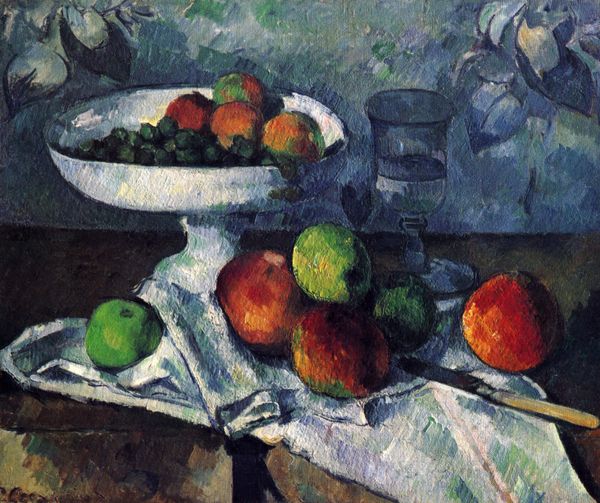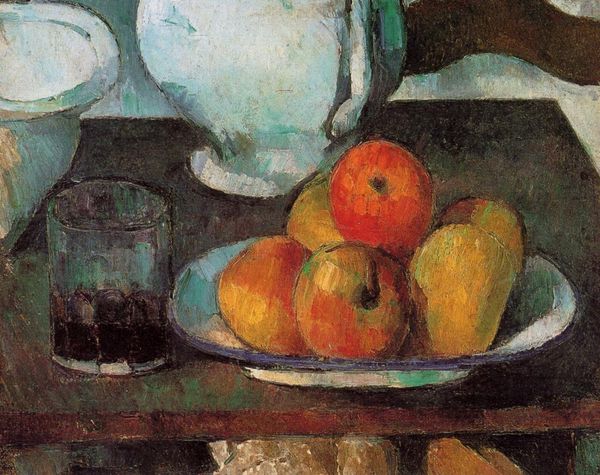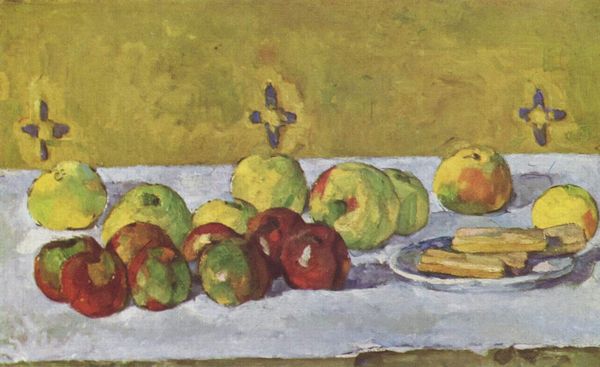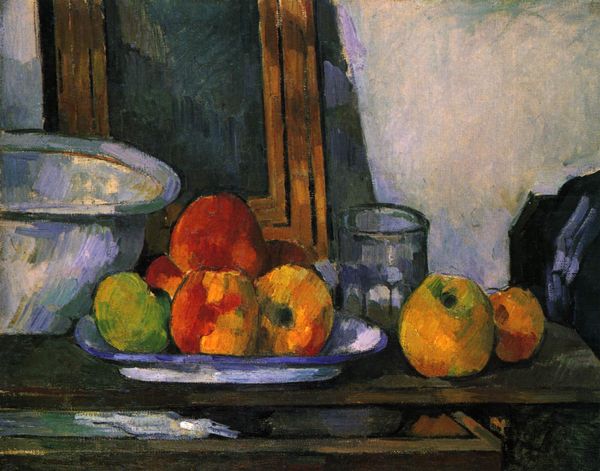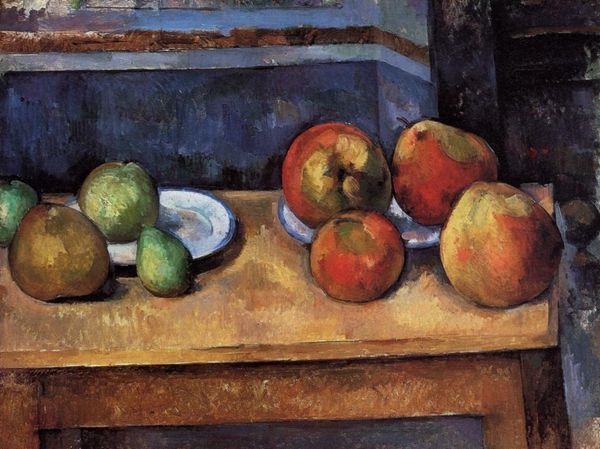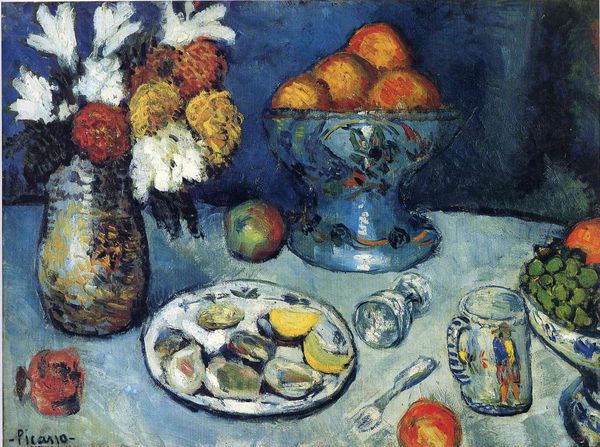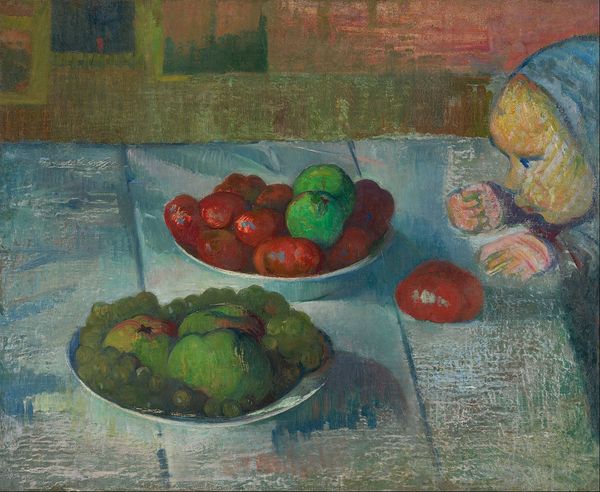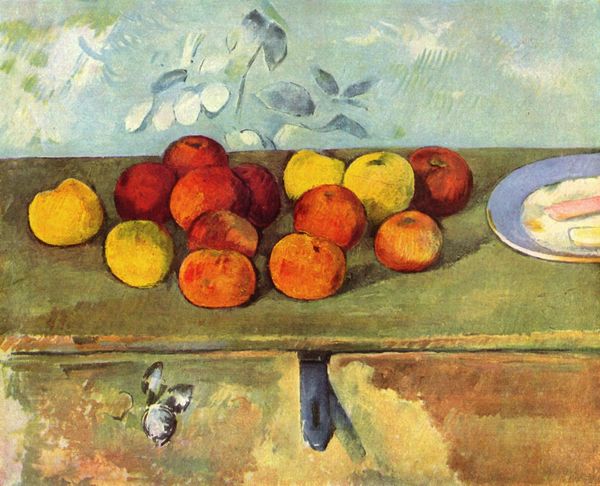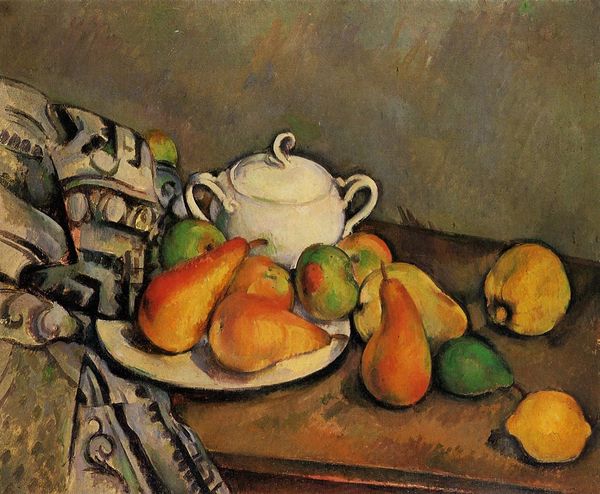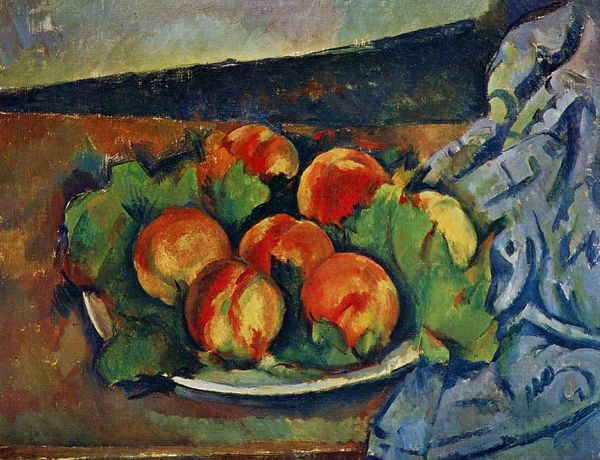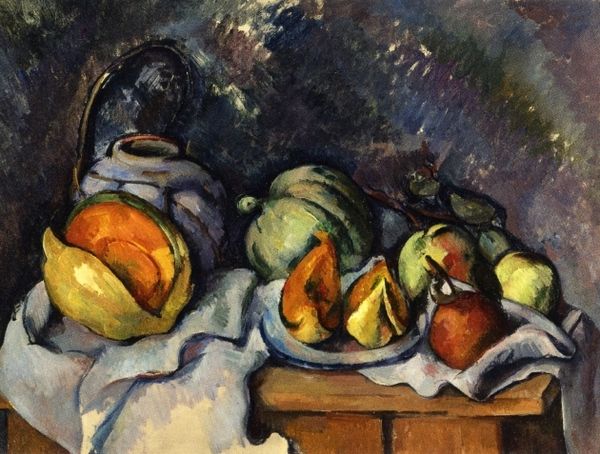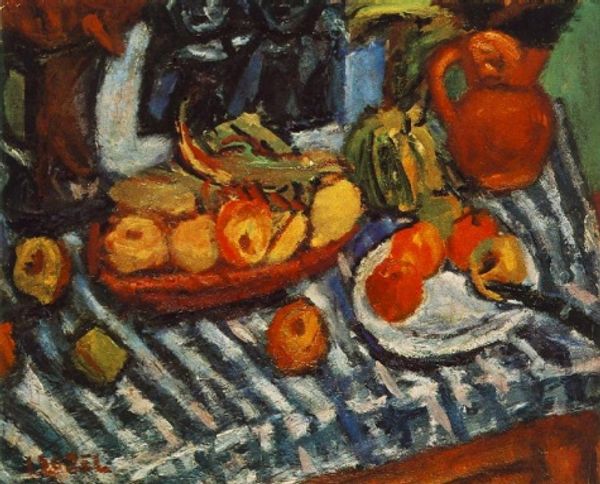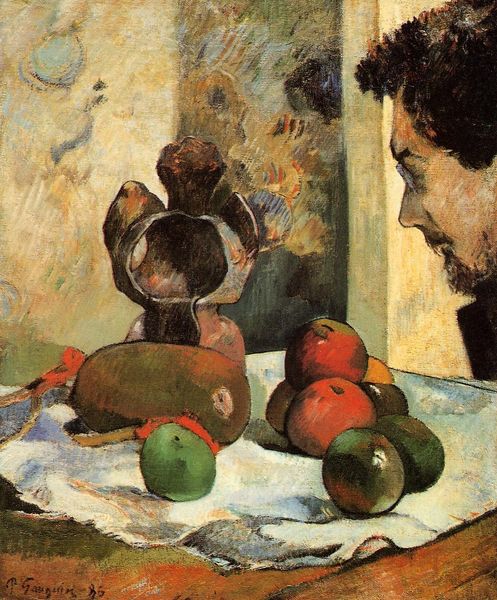
painting, oil-paint, impasto
#
narrative-art
#
painting
#
oil-paint
#
oil painting
#
impasto
#
fruit
#
symbolism
#
post-impressionism
Copyright: Public domain
Curator: Gauguin’s "Fruits," painted in 1888, captures a fleeting moment, wouldn’t you say? It resides here in the Pushkin Museum, Moscow. Editor: It’s almost aggressively… present. The textures practically leap off the canvas, all impasto and heavy strokes. I can almost smell the ripeness—and maybe something just a bit past ripe? Curator: That materiality is crucial. The thick oil paint feels almost sculptural, giving these everyday objects a weighty presence. It's less about accurate depiction and more about feeling the fruit. Also note how, interestingly, a Japanese Noh theatre mask seems to keep guard of these delicacies, set on the left of the canvas. Editor: I'm immediately thinking of colonial trade routes – the very materiality of the pigment, of the fruit, implies that this "simple still life" is situated at the crux of very complex economic structures, wouldn’t you agree? Where were the pigments sourced from? What class would be consuming all of these goods and in what quantities? And there is a shadow of class disparity haunting the painting if you will. Curator: Fascinating—though, dare I say, I initially perceived this more as a conversation with mortality? That contrast, ripe abundance beside the mask, gives pause for thought on life's ephemerality and the shadow of the inevitable. Plus, those jewel-toned grapes are rendered so lusciously, like forbidden delights teetering on the edge of decay, while those plums echo purple decadence in the dim corners! Editor: Agreed, symbolism abounds, but again—what were the working conditions for those growing the ingredients for the oil paint, for picking the fruit? Who even owned the land it grew on? These raw materials carry so much cultural baggage. Curator: Indeed. Gauguin’s deliberate impasto technique, the thick application, practically dares us to ask such questions! It gives such solidity, that everything exists on more than one plane. Well, thank you! These layers certainly bring new flavors to appreciating this piece. Editor: Precisely! Materiality isn't just about aesthetics, it's about ethics and global economic realities. Thanks, this was great!
Comments
No comments
Be the first to comment and join the conversation on the ultimate creative platform.
